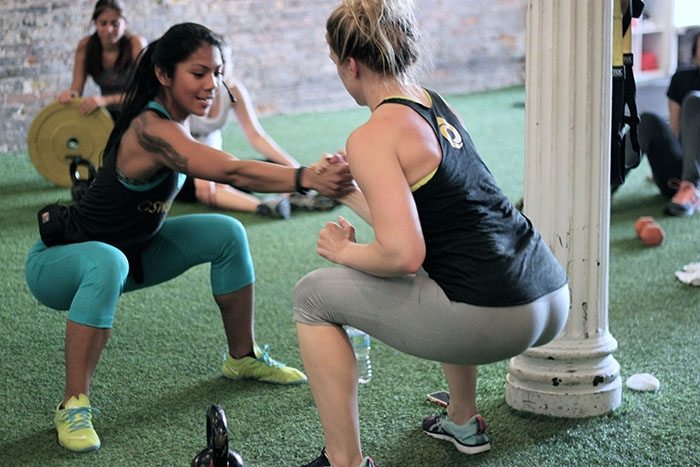What Makes a Good Fitness Instructor
These days, you can find a workout-related class doing just about anything and just about anywhere. But the type of instruction you need based on the type of class is incredibly nuanced. Which means that no matter how many times a week an instructor teaches a specific class format, and no matter how long they’ve been at a certain studio, complacency can be an instructor’s downfall.
As an instructor, I feel it’s immensely important to constantly check in and evaluate how my teaching is going so that I don’t fall into the trap of stagnancy. Because when I take a step back and look at the class from a participant’s eyes, my decisions carry so much more weight than I give them credit for. Whoever showed up for my class trusts me with their hour of workout time for the day and I don’t want to waste it.
But self-check is only so effective (with that pesky Confirmation Bias making me tell myself I’m awesome and all). I surveyed 20 group fitness participants about what makes a great instructor, and I’ll use these insights to ladder my teaching back to and make sure ‘complacent’ is not one of the adjectives anyone would use to describe my teaching style. To anyone else who finds themselves leading others frequently, whether you’re in the fitness world or not, I hope you find these thoughts helpful, too!
When I asked everyone what traits they expect from an instructor, I got lots of responses like fun-spirited, motivational, challenging, knowledgeable, positive, energetic, inspiring, and relatable. But when I asked what makes a class go above and beyond expectations, the ability of the instructor to personalize for each participant was key.
That means being able to read the room and modify for each type of participant, making sure that those who have never taken a kickboxing class before and your regulars every week all leave feeling empowered and satisfied. It also means learning names. Almost every respondent said they liked to be complimented by name and given direct feedback. One respondent also said she liked getting to know more about her instructors outside of the 45 minute class period.
Interestingly, most who mentioned that class personalization was important also noted it is probably one of the hardest jobs the instructor has. They recognize how difficult it is to talk to everyone and deliver on what each individual is looking for, and they recognize that being human is a positive trait. I sometimes find myself teaching to a sea of bodies and I forget that we are all together in the room, working out with each other and just being present in the moment – paying attention to the needs of the people right in front of me – is totally enough. The class won’t fault you for switching up an exercise that isn’t going as planned; they just want to get a good workout in and they trust you to make that happen.
Many responses focused on needing to trust that an instructor is knowledgeable in order to like a class and want to return. From cueing each move correctly the first time to giving corrections in different ways so that everyone can understand and internalize, safety has to be a main focus throughout the entire workout. No matter how many times someone on the front row who has been to all your class has heard you say “engage your core and pull shoulders away from your ears,” it will always be an important reminder. Being ill-prepared for a class is the easiest way to set yourself up for failure, and the easiest of all issues to correct.
Lastly, here are some of the most interesting learnings I took away from my survey:
- Music isn’t the most important element to a class, the workout is. So spend less time (proportionally) on music selection than thinking up a well-planned sequence.
- When someone who has been coming to my class for a few months and suddenly drops out, I shouldn’t take it personally. Lots of folks just get bored with their routines and choose to switch things up for no other reason than that.
- Sometimes I think that I’ve been using the same “moves” for far too long and I need to create more complicated sequences, but those that come to a class are far less likely to get bored with a sequence as long as the class if fun and the energy is up.
- Students appreciate it when an instructor goes out and takes classes to learn new things and then incorporates those ideas into their own routines.
- If you can make a student feel as though they’ll get FOMO (fear of missing out) from a workout class, you’re probably doing your job.













